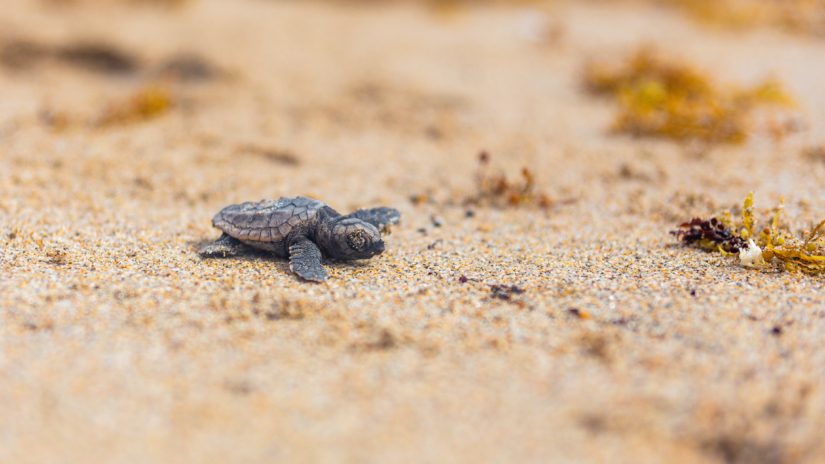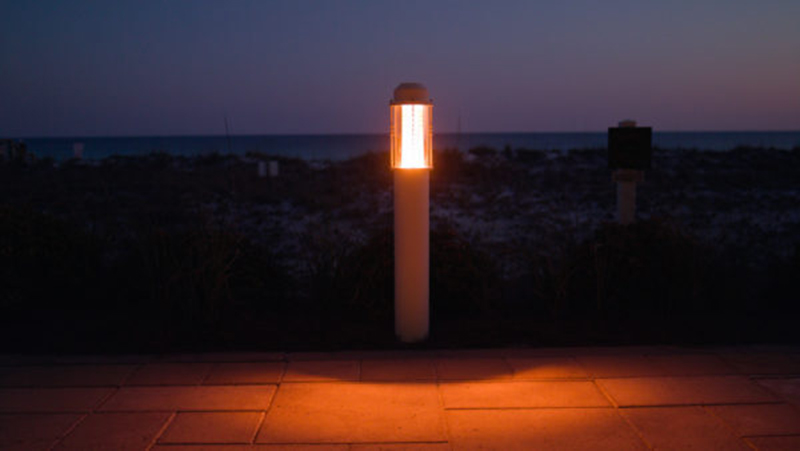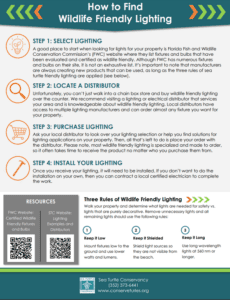Sea Turtle Protection

All seven species of sea turtles are either endangered or threatened. The loggerhead is the most common sea turtle found in Pinellas County, where nesting and hatching occur from May 1 through October 31.
The Nesting Process
- Female sea turtles come ashore in the dark, dig a hole using their rear flippers, and lay 100-150 eggs at a time.
- During a season, a single female lays three to eight nests. After a 45- to 70-day gestation period, hatchlings emerge from the nest at night and follow the moonlight reflecting off the Gulf of America.
- Only about one in a thousand hatchlings makes it to adulthood, which is why it’s important to make sure they have the best chance to nest, hatch and return safely to the ocean.
- In 2019, Pinellas County marked a record high of 669 sea turtle nests! Sadly, these numbers are in decline which makes every nest important for more generations of turtles to call Pinellas County home.
Turtle-Friendly Lighting
Sea turtles can become disoriented from lights and illuminated objects visible from the beach. Most importantly, bright lights disorient hatchlings by attracting them inland where they often die from dehydration or predators or are run over by motor vehicles. It is very important that occupants and managers of beachfront properties minimize the amount of light that shines onto the beach.
Remember, it’s important to keep any lighting at the beach:
- LOW – low to the ground and not visible from the beach
- LONG – long wavelength in the amber/red range of the light spectrum
- SHIELDED – no bulb or direct lighting should be visible

You Can Help
- Do not harass or touch any sea turtles or hatchlings.
- If you come across a sea turtle in need of help, please call the Florida Fish and Wildlife Commission (FWC) at (888) 404-3922 or Clearwater Marine Aquarium at (727) 441-1790, extension 1.
- Pick up your trash and cover any holes to give hatchlings the best path to the ocean.
- From May 1 through October 31, limit light that is visible from the beach. Turn off lights visible from the beach after sunset.
- Use an FWC-approved amber light if you need to use light near the beach. Learn more about turtle-friendly beach lighting.
- 12 out of 13 Pinellas County barrier island municipalities have light ordinances in place to assist our hatchlings in finding their way to the water. To review your city’s lighting ordinance, visit the FWC’s Sea Turtle Protection Ordinance web page. Scroll to the Pinellas County section and select your city’s ordinance/code.
- To report fishing violations and injured or dead marine mammals and sea turtles, please contact the FWC at (888) 404-3922.
- Learn more about the Sea Turtle Conservancy’s Beachfront Lighting Retrofit Program
- Sea Turtle Conservancy: Sea Turtles and Lightning – What You Can Do

Nourishment Projects
During beach nourishment projects, scientists permitted by FWC monitor and relocate sea turtle nests as needed. Further in-depth monitoring of sea turtles and their nests occurs for three years following a nourishment project.
Prior to beach nourishment projects, portions of Sand Key had no dry beach and thus no nesting habitat for marine sea turtles. From 2011 to 2019, the annual number of total nests observed along Pinellas County beaches has risen by more than 400%.
Without the habitat provided by periodic nourishment projects, the number of nests laid each year would be much lower. In 2020, the nesting numbers decreased. This decrease was seen across the state of Florida.